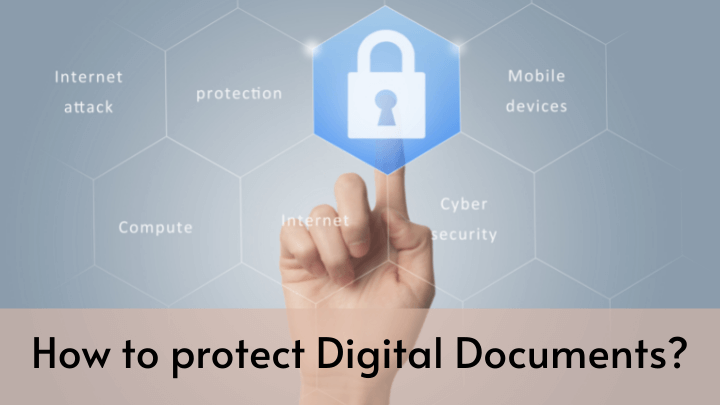
As a newly appointed CISO (Chief Information Security Officer), it can be exciting to be at the forefront of IT security. You must know how to protect digital documents of your business and personal life. However, given the scale of data attacks and cyber threats from a variety of actors, including malicious or unintentional insiders, lone cybercriminals, organized corporate espionage rings or rogue government threats and similar such proxies, it is crucial to take essential steps in thwarting them.
Some of your strategies in addressing these security issues could include:
- Obtaining the latest document security technology and management applications.
- Developing innovative, compulsory, cyber and data security training for the organization or third-party associates.
- Introducing expert consultants to help you understand the latest threats in the industry.
- Tightening regulations and protocols and increasing stress penetration tests.
Unfortunately, even though you may follow all the above measures, your organization could end up as yet another victim to data theft or data leakage. Regardless of the steps you take, your organization could be inadequately prepared to prevent a data breach. Additionally, a flat-footed response once the data breach takes place could result in massive losses to the organization, thus making you the scapegoat. Hence, if you have to prepare your organization and the IT department to address and handle new and unprecedented data threats, you need to follow two essential rules. These include:
- Build trust from the ground up; down and in and all around.
- Assume zero trust overall.
These two are conflicting and contrasting rules to follow. However, they are the only crucial rules that every chief information security officer needs to adhere to. While building trust is essential in ensuring team camaraderie, employee trust and overall well-being, zero trust is a vital technology and a secure data protective measure. This means that no individual, whether privileged or permitted, must be granted complete access to all data at all times.
But if this zero-trust approach is employed in personal and workplace relationships, it could be disastrous to teambuilding and productivity. This is because, when you deal with individuals within the organization and third-party associates that support and back your company products and services, you need to assume complete trust. Such emotional bonding will also help to protect digital documents.
Lack of complete confidence can set you and your entire department up for failure in the following ways:
- Implementing data cybersecurity in the organizational culture will become difficult.
- Senior management and board leadership could be wary of including the IT team on important issues.
- There could be little to nil interaction with the CEO.
- The IT department could be viewed as an impediment to productivity and growth.
- There could be high rates of employee turnover and burnout.
- The IT departments response and vigilance to data threats could fall drastically.
To avoid being in such a position, when you look to build trust, remember to consider up and out and down and in. This means, when building trust up and out, you need to look at constructing relationships from your point of view. It is a standard approach to eliminating poor communication and mistrust around you.
When building trust, look at establishing a relationship with your peers and your superiors. This means you need to understand from their point of view and speak in a language they know, especially one that addresses the concerns and interests. Building trust with your team is essential because when you are in a position that commands respect, trust is usually earned and not given because of one’s designation. Zero trust enters the picture when it comes to corporate systems and data. Regardless of the relationship, you build with your employees and across the organizational spectrum, assuming that every individual could cause data theft, or pilferage can be a crucial element in preventing a data breach. In this regard, digital rights management can come to your rescue.

In an organization that has high-value assets, it becomes your prerogative in securing the supply chain and continually work to improve the organization’s security posture. Despite numerous perimeter style defences, such as firewalls, antivirus software, malware, multiple network zones and the like, the only intelligent and proactive way in helping to safeguard your organization’s crucial document assets is through PDF DRM. By implementing content-level data protection technologies such as DRM (Digital Rights Management), you can adopt a zero trust posture while at the same time achieving the complete trust stance in relationships in a work environment.
A zero trust position means that permitted users have to prove they can be trusted, and this must be extended down to document-level data protection. By providing security down to the data level, DRM as a document-centric system safeguards your PDF files and documents containing confidential and sensitive information such as intellectual property, personally identifiable information, mergers and acquisitions data, products and services information, and other such crucial data assets. PDF DRM assures persistent protection throughout the lifecycle of your protected documents, regardless of where your documents are located. It is one of an essential techniques to protect your digital documents.
PDF DRM software enables you to share documents securely internally and with third parties while controlling how they are accessed and used. You can automatically expire PDF files, revoke access at any time, lock use to devices and locations and track use.
